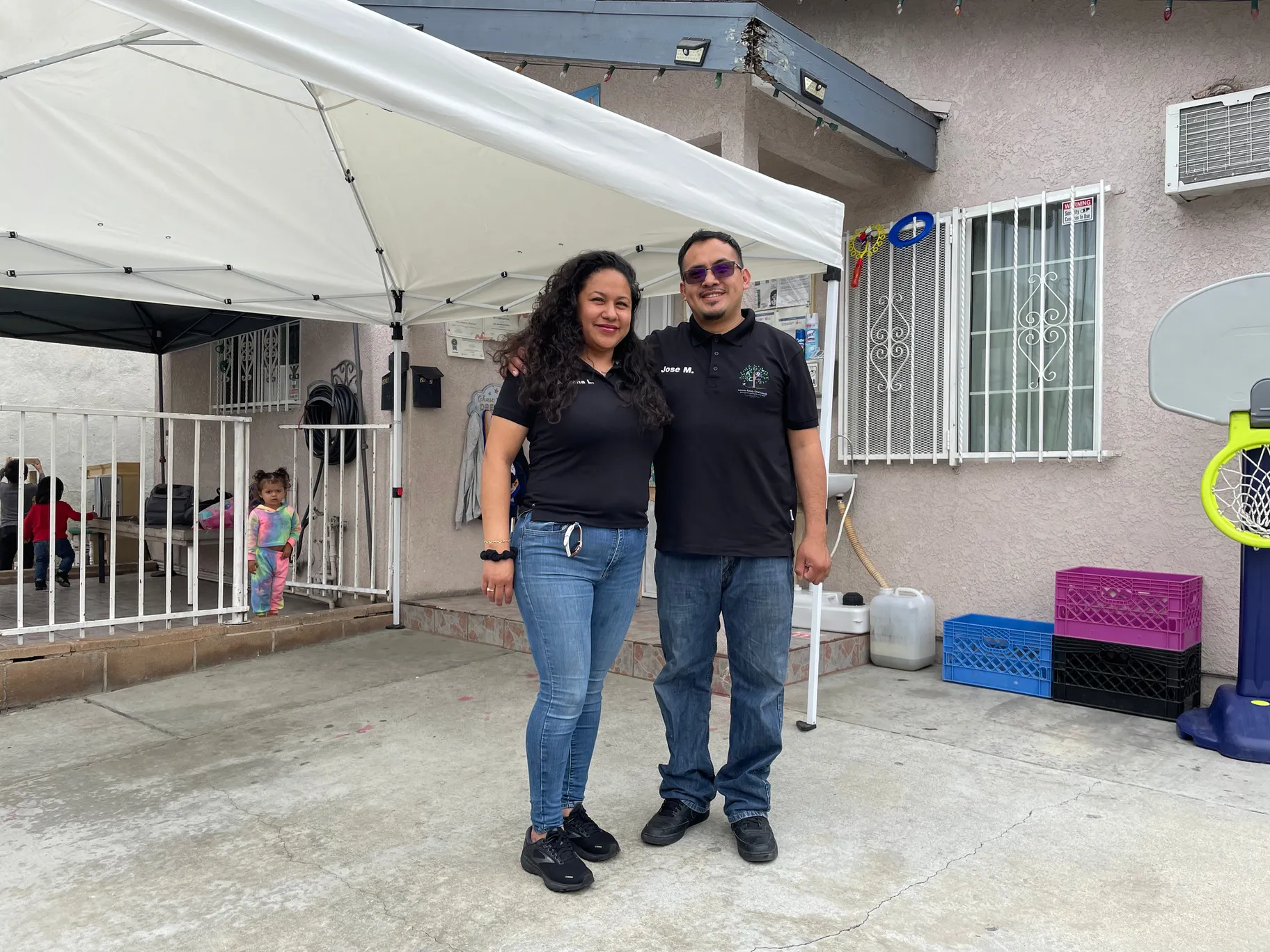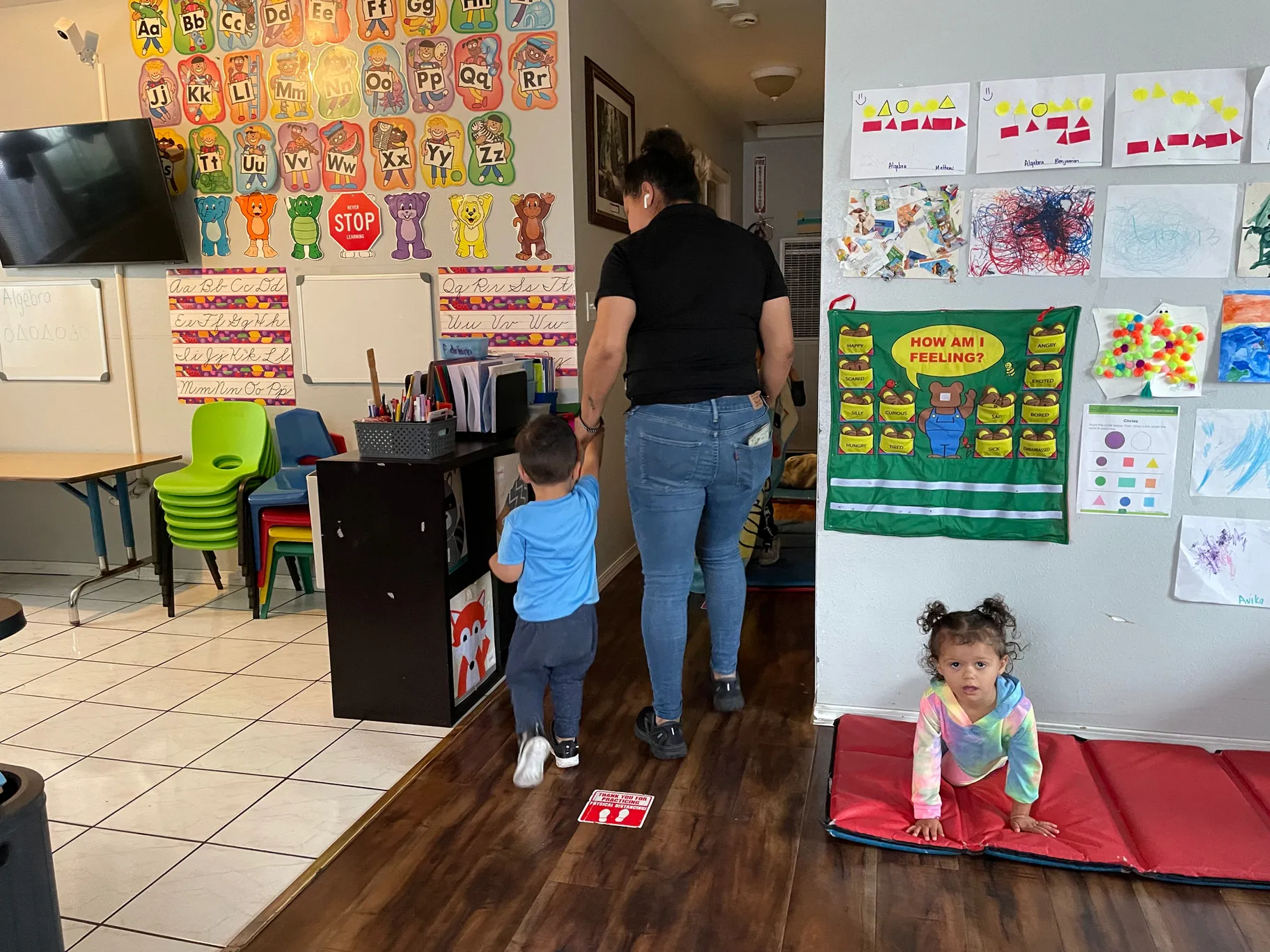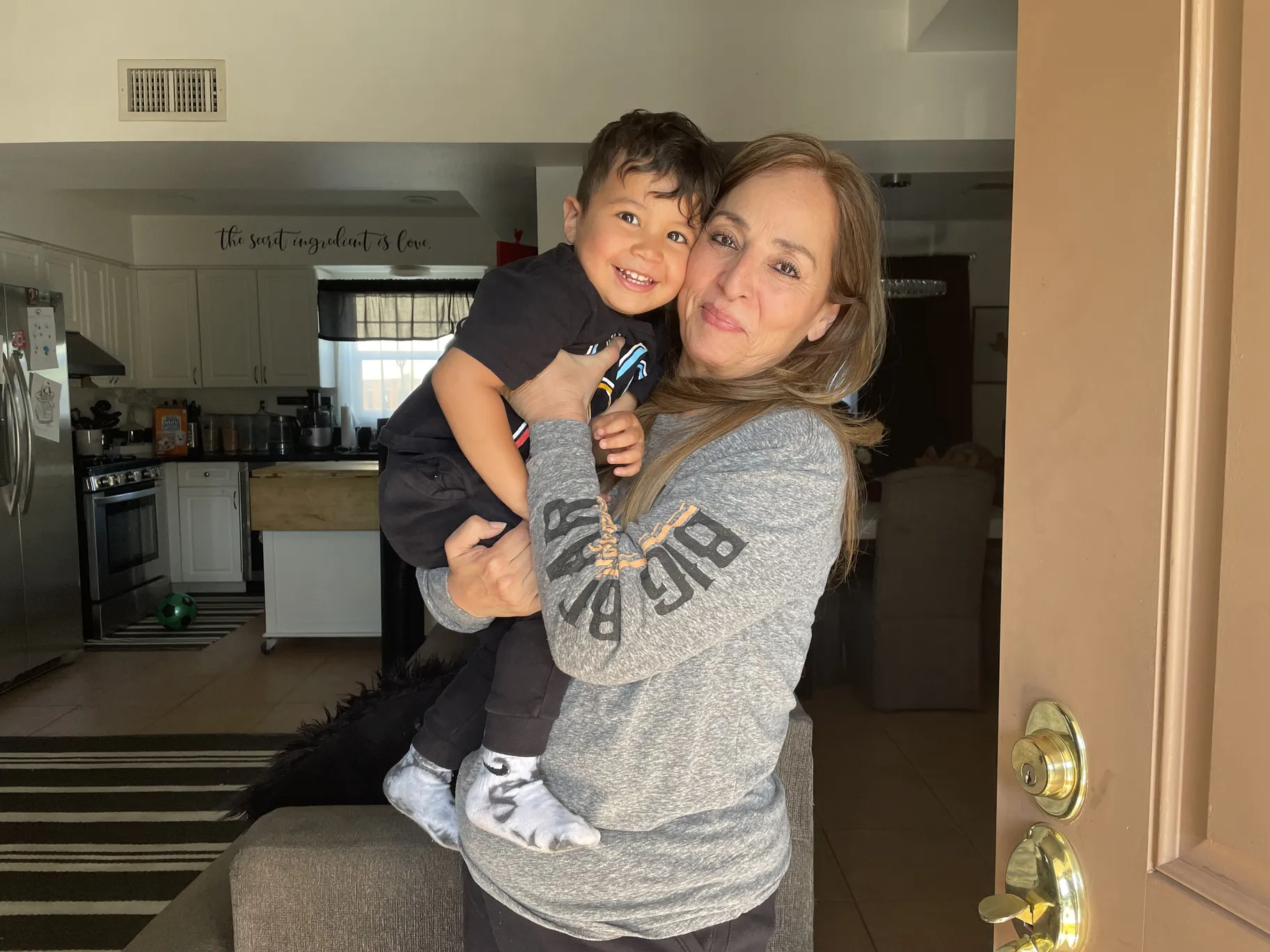Adriana Lorenzo never thought she would open a child care, and definitely not in her own home. The reason was simple: She grew up in one, run by her mom in their family home in Boyle Heights.
“I remember being little and telling my mom, ‘I am never going to work in a day care. I hate having kids, every day, all day, in my house, always in my room grabbing my things,’” says Lorenzo. “I started working with my mom at 16.”
Yet at 19, she was a new mother faced with the need to earn a living, and she opened up her own – Lorenzo Family Child Care. In the two decades since, her feelings about sharing a house with kids have completely transformed.
“I feel like these kids are also my kids,” she says, standing in her front yard during play time on a recent afternoon. “They're with me – with us – more time than what they spend with their own parents.”
But now Lorenzo’s business is in trouble.
Last year, the state of California approved hundreds of millions of federal dollars to help child care providers get through the pandemic. Eight months later, most of those payments haven't arrived, and some providers, like Lorenzo, have been forced to take out loans or close down.
“It was supposed to be last winter,” says Lorenzo. “We're almost in summer, and that stipend is still not here.”

Lorenzo Family Child Care has been operating in Boyle Heights for 21 years. Photo by Robin Estrin.
Lorenzo’s margins before the pandemic were already slim. Despite work days that sometimes stretch beyond 12 hours, she says she and her husband and business partner Jose Martinez take home less than $1,000 per month for their family of six.
When it’s especially tight, Martinez drives delivery for Amazon. Lorenzo sometimes helps, along with their two youngest kids, who she says do their homework in the truck, and sometimes help sort packages.

Husband and wife Adriana Lorenzo and Jose Martinez run Lorenzo Family Child Care. They're in debt awaiting payments owed to them by the state. Photo by Robin Estrin.
Child care workers have one of the worst-paid jobs in the U.S., according to the Center for the Study of Child Care Employment at UC Berkeley.
Research from the center shows the median wage for child care professionals in California 2019 was $13.43 – just above the $12 minimum wage at the time.
“Largely, and especially in a place like California, [it’s] women of color who are doing all of that work,” says Brandy Jones Lawrence, a senior analyst for the UC Berkeley center. “They are paid, on average, poverty wages, and by receiving those poverty wages, they subsidize our early care and education system.”

Adriana Lorenzo leads Elijah Rascon to nap time at her family childcare. Photo by Robin Estrin.
At the start of the pandemic, Lorenzo took out a loan for about $5,000. She needed to hire more help with cleaning, buy a lot of disinfectant and room dividers to help the kids with distancing, and improve her Wi-Fi set up. Her daycare kids, and her own kids, were logging in to school from the house. They needed headsets and laptops.
Over time, that loan haunted her. Last year, the interest was so high she and Martinez decided to take out a second loan just to pay the first one off.
“It’s a 29.9% interest rate,” she says. “But it was either that or we were going to close.”
Lorenzo thought they’d be able to pay the second loan off quickly. That’s because just a few months later, she learned the state of California was offering stipends to child care businesses like hers, from a fund set up by the Biden administration to offer pandemic relief.
The stipends were meant to help providers serving state-subsidized families, to cover hardships caused by the pandemic like reduced enrollment and added cleaning costs. In September, legislators authorized $1,442 per child enrolled as of April 2022 – a lifeline to Lorenzo, who was caring for more than 14 kids at the time.
But more than one year later, almost none of that money has reached the people who need it. Theresa Mier, a spokesperson for the California Department of Social Services, said in a written statement to KCRW that the agency anticipated releasing the stipends in early 2023, but because of “contracting delays,” the money is only now trickling out.
She declined to elaborate and department officials would not agree to an interview with KCRW.
Mier says the state began releasing the stipends during the first week of May. But the payments are not going directly to families like Lorenzo’s. Instead, they’re traveling from the state to contractors, who then have 45 days to reimburse providers for subsidized care.
Mier says some contractors have started to issue stipends to providers, and others are in the process of doing so. To receive a stipend, providers must complete an American Rescue Plan Act (ARPA) survey by August 15.
The deadline now to disburse all the money is September 30.
Lorenzo is among the many who have not yet received her stipend. She says she doesn’t know how much longer she can hang on.
If she does have to close her doors, it will leave the families who depend on her scrambling.
Sandra Rascon, who works as a special education assistant and bus driver in the Los Angeles Unified School District, takes her 1-year-old grandson, Elijah, to Lorenzo’s child care every morning before starting her bus route.

Sandra Rascon poses at home with her grandson Elijah, who attends Lorenzo Family Child Care. Photo by Robin Estrin.
Rascon says the business closing would initiate a “domino effect” of negative outcomes for her. “It would be really, really bad. I don't have family members that can watch them,” she says. “So that means I would not be able to go to work, then I'm not going to pay my mortgage, and I'm not going to pay my bills, and I'm not going to pay my car payment, and we might not have a car, and we might not have a house, and we might not have food.”
Lorenzo doesn’t want to close. Just the opposite, in fact. She wants to expand her operation from her home to a full-fledged child care center. She’s been applying for grants, and both she and Martinez have gone back to school at East Los Angeles College to get degrees in early childhood education.
But now that it could be months before their payment arrives, they’re talking about holding off on enrolling in their next round of classes – just to keep the business running.
Brandy Jones Lawrence at UC Berkeley says the problem here exceeds the state’s failure to pay child care provider stipends on time.
“We can no longer think that we can support the early care and education system on birthday checks and bake sales,” she says, referring to one-time payments from the state. “We need fundamental infrastructure change.”
Child Care Providers United, the union representing family child care providers, is currently negotiating its second contract with the state, advocating for higher wages and more paid leave.
